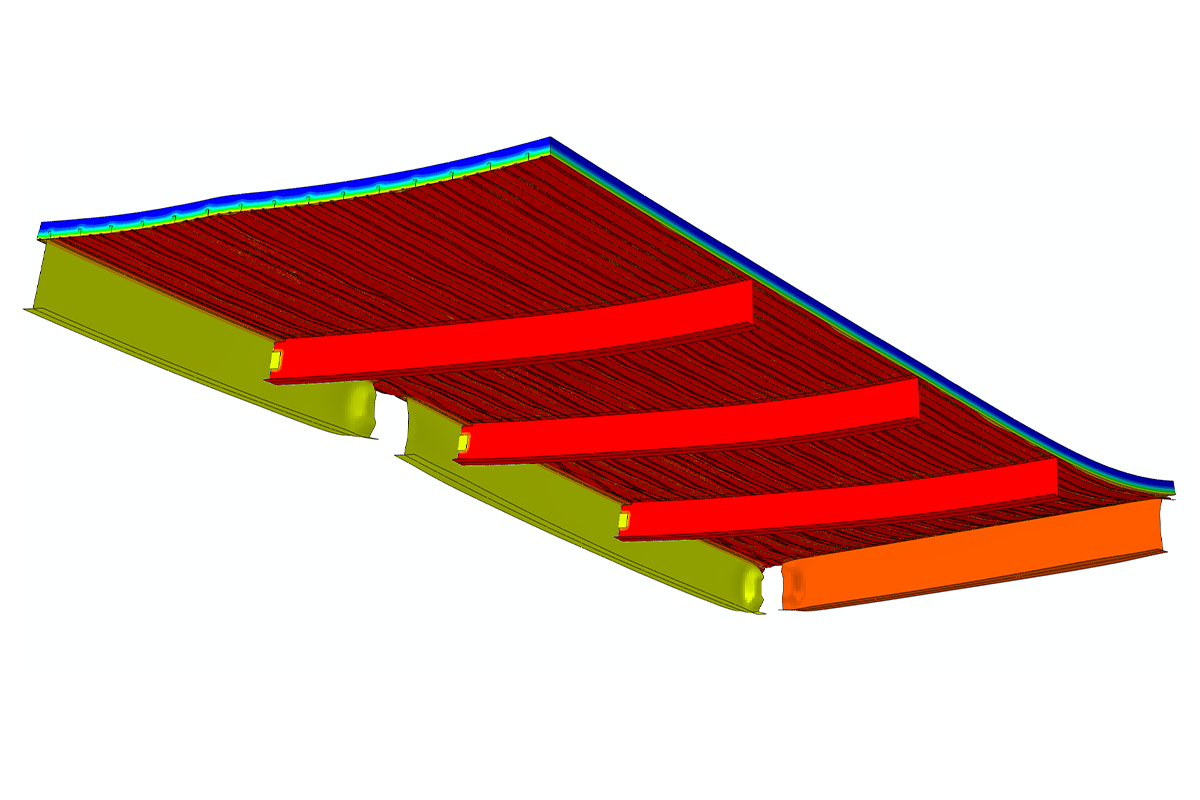Composite slabs with profiled steel decking are widely used in the construction for their outstanding performance.
Based on HERA’s many years-experience in analysing several structures in fire, one of our member companies has engaged us in commercial research. This research aims to evaluate the structural performance of composite slabs under severe fire conditions.
The simulation work covers three different decking profiles and includes replicating the corresponding fire tests dating back to 2002 and 2023. The composite slabs were loaded with an equivalent 3kPa uniformly distributed pressure and exposed from 182 to 242minutes of ISO 834 fire loading.
Sequentially coupled thermal-stress finite element analysis procedures were carried out to predict the temperatures through the slab thicknesses; compare them to the thermocouple readings in the fire tests and subsequently run the explicit quasi-static stress analyses to predict the deflections. Once the finite element (FE) models replicated the fire test results to a sufficient accuracy a quarter of a representative composite floor of an actual 17 story office building was set up using the same detailed modelling approach and analysed.
Such a step-by-step modelling approach to find out the structural response of larger structures – in other words composite floors in this case -, beyond the practicality of experimental fire testing provides great certainty in the simulation results. They serve as a benchmarking example to check the accuracy of other simpler structural engineering design procedures predicting deflections, such as the Slab Panel Method (SPM) widely used in New Zealand. This study aims to assess the response of slab panels exposed to standard fire conditions.
ABAQUS/CAE/Standard/Explicit software were used to carry out the simulations.

